The flag of Portugal is a national emblem that encapsulates the nation’s rich cultural legacy and forward-looking spirit. Reflecting a blend of historical journeys and contemporary values, it symbolizes the resilience and innovative nature of the Portuguese people and celebrates Portugal’s unique global and maritime significance.
Flag of Portugal
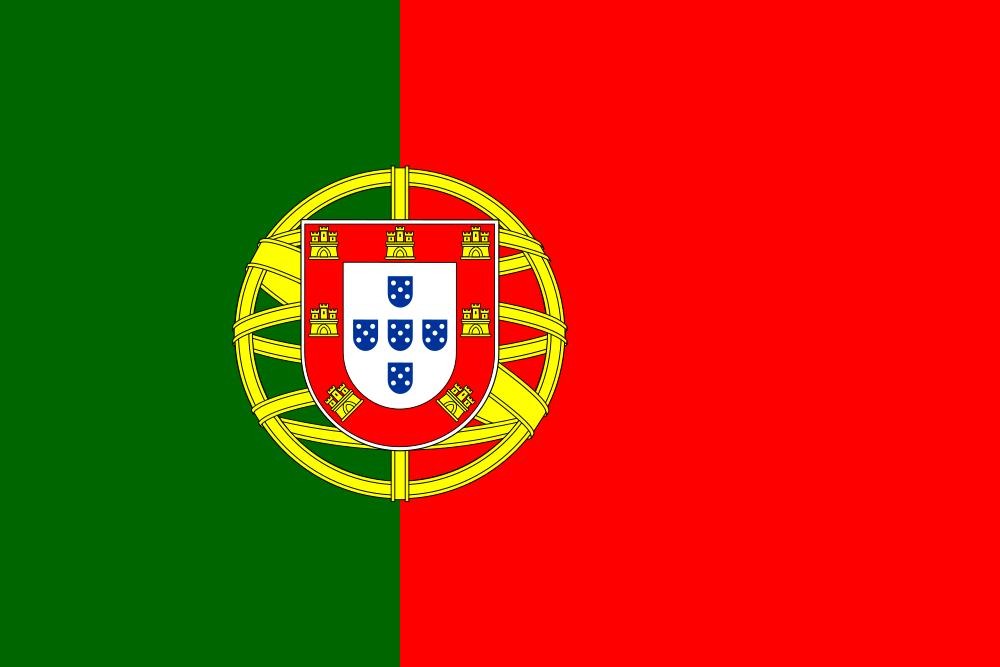
Portugal’s flag captivates with its two bold bands of green and red, framing the central coat of arms that adds a layer of historical intrigue.
This coat of arms, rich in symbolism yet briefly touched upon here, complements the flag’s vivid colors to symbolize the nation’s storied past and its maritime prowess, collectively embodying Portugal’s resilient spirit and heritage.
Flag of Portugal: Color Palette
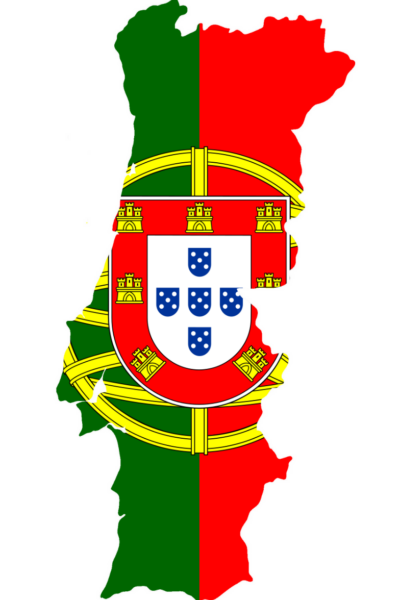
The Portuguese flag’s color palette is visually striking and symbolically profound. Each hue has been carefully considered, poised to unfold their tales in the subsequent sections.
These colors enhance the flag’s aesthetic appeal and carry deep-seated meanings, resonating with the nation’s narrative and ethos.
Meaning of Each Color
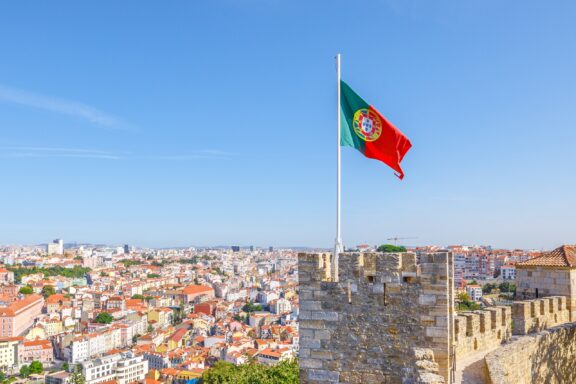
Red
The red in the Portuguese flag symbolizes the bloodshed during the country’s struggle for independence and transition to a republic. It reflects the sacrifices made by the revolutionaries in the 1910 revolution that led to the establishment of the Portuguese Republic.
This color is a vivid reminder of the nation’s tumultuous past and the strength its natives show in the face of adversity.
Green
Green in the flag represents hope for the future of Portugal. It is a color that signifies renewal, growth, and the forward-looking aspirations of the nation.
The inclusion of green marks a departure from the traditional royal colors of blue and white, signifying the nation’s break from monarchy and its optimistic outlook towards a republican future.
Coat of Arms of Portugal
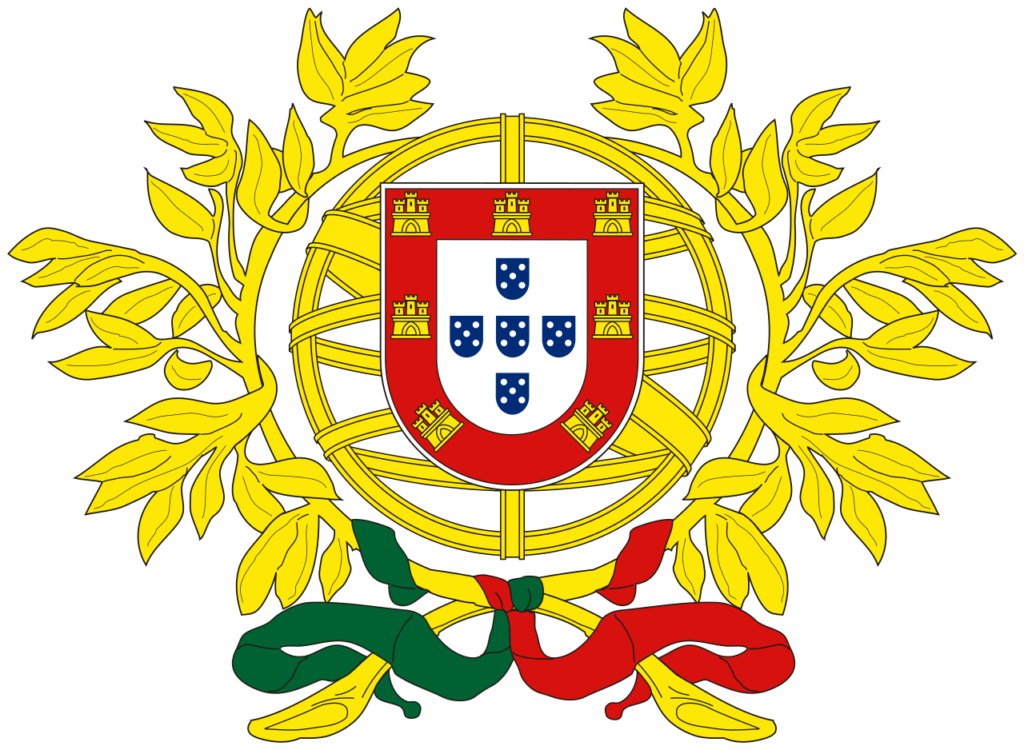
Portugal’s coat of arms is an intricate symbol embodying the nation’s extensive history and diverse influences.
- Central Shield: At its heart is a red shield, a longstanding element in Portuguese heraldry. This shield is decorated with five smaller blue shields arranged in a cross containing five white dots. These elements represent the victories of Afonso I, the nation’s first king, over five Moorish kings and the divine protection he received during these battles.
- Surrounding Castles: The seven yellow castles encircling the central shield symbolize fortifications reclaimed from the Moors, especially under King Afonso III. These castles are emblematic of Portugal’s military triumphs and historical achievements.
- Armillary Sphere: Behind the shield lies a yellow armillary sphere, an instrument of navigation that highlights Portugal’s significant role in the Age of Discoveries. This symbol underscores the nation’s golden era of maritime exploration and colonial expansion.
- Red Phrygian Cap: Crowning the shield is a red Phrygian cap, a symbol frequently associated with liberty and revolutionary ideals, emphasizing Portugal’s commitment to freedom and republican values.
Overall, the coat of arms and the flag colors of Portugal weave together a narrative of historical victories, maritime prowess, and a vision for a hopeful future, embodying the essence of the Portuguese identity.
Historical Evolution and the Meaning Behind Changes
The evolution of Portugal’s flag reflects significant shifts in the nation’s political and cultural history. Originally, the Portuguese flags featured blue and white, symbolic of the monarchy and the religious military orders from the 12th century.
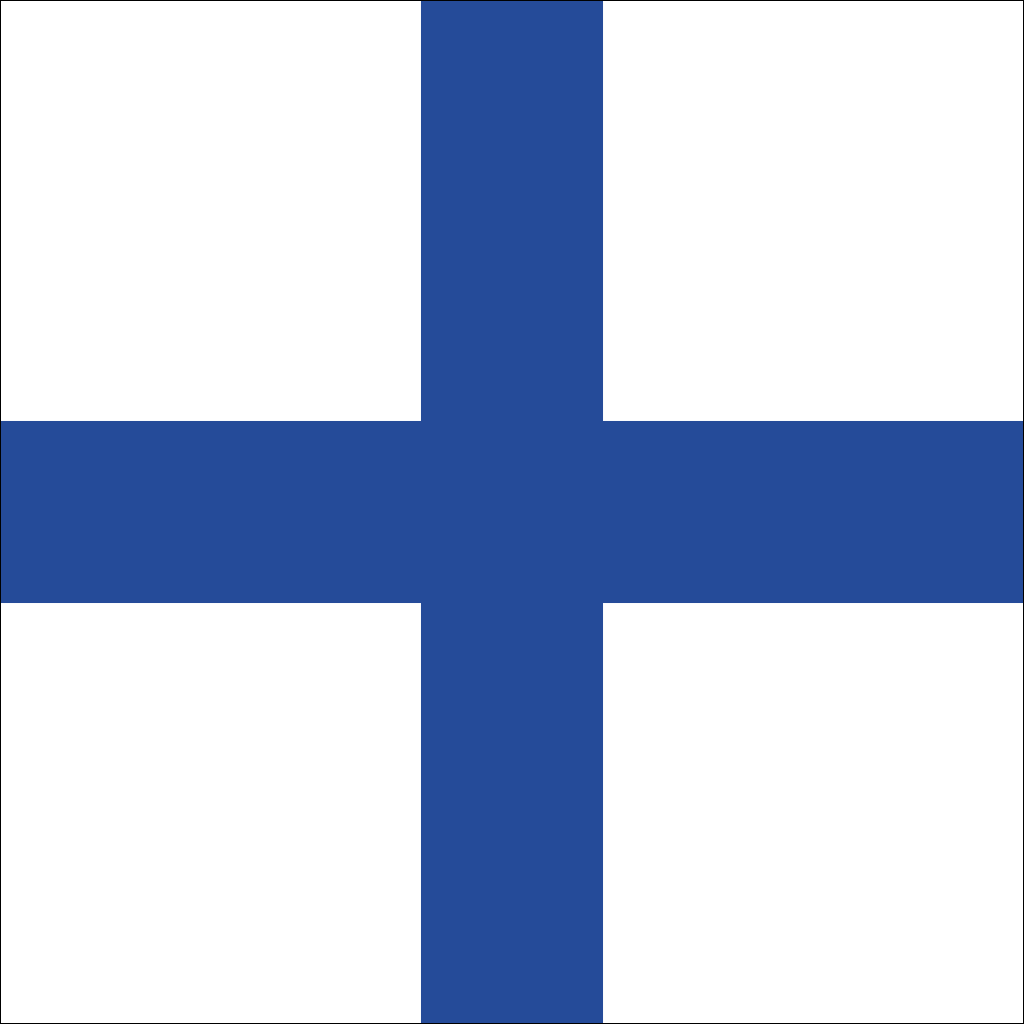
By the 19th century, red and green emerged, aligning with the growing republican sentiments and independence movements. These colors were a notable departure from the monarchical past, indicating a shift towards new ideals and aspirations.
The most transformative change occurred in 1910 with the establishment of the Portuguese Republic. The flag was redesigned to its modern form, marking a clear break from the previous monarchical symbols. This redesign represented a change in governance and a new era in Portuguese history.
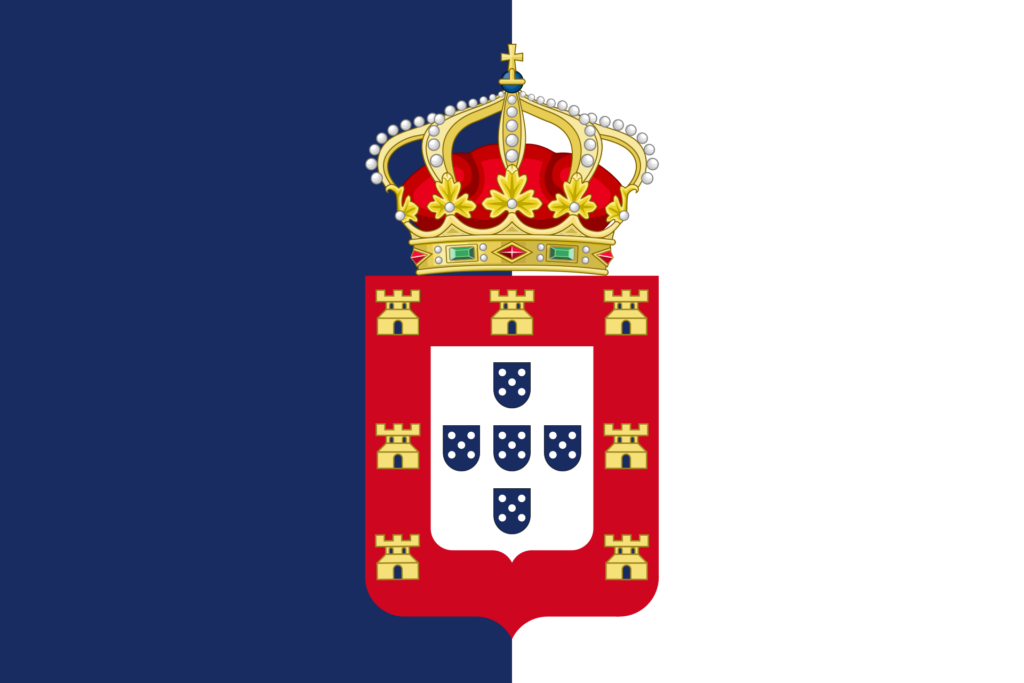
Including the armillary sphere and the Portuguese shield in the flag design further emphasized the nation’s rich maritime history and historical victories. These elements underscored Portugal’s legacy and aspirations as a forward-looking republic.
Overall, the flag’s evolution from its early monarchical symbols to the current design is a testament to Portugal’s journey through history, mirroring its changing political landscapes and cultural identity.
Overall Symbolic Meaning of the Flag
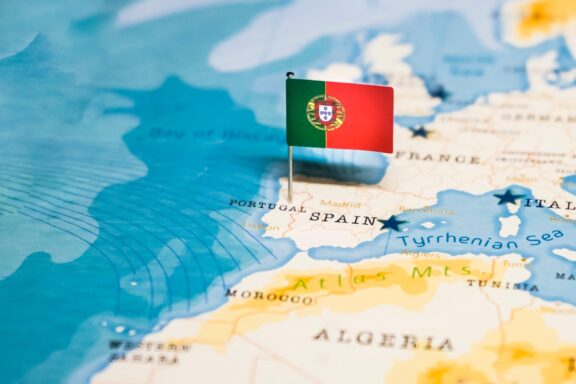
The flag of Portugal is a symbol of resilience, hope, and national pride. Its design, juxtaposing symbols, represents Portugal’s journey from monarchy to republic, with red signifying historical struggles and green symbolizing renewal and optimism.
The armillary sphere and shield add historical depth, representing maritime heritage and victories. Overall, the flag unifies the nation’s prosperous past and future, celebrating achievements and embodying the collective spirit of its people.
Similar Flags to the Flag of Portugal
While Portugal’s flag is uniquely characterized by its red and green colors and the armillary sphere, a few international flags exhibit some resemblance in certain aspects.
Spain
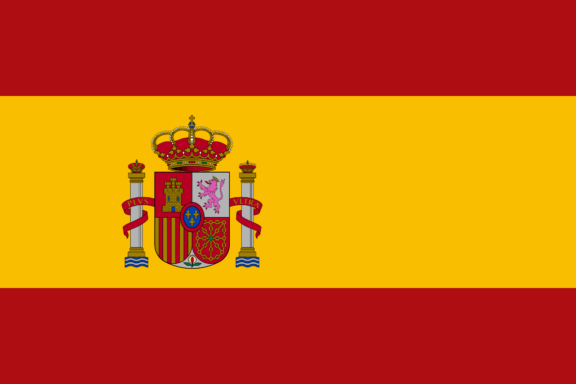
The flag of Spain features three horizontal stripes: red, yellow, and red, with the yellow stripe being twice as thick as the red ones. On the left side, it hosts the national coat of arms. While Spain’s flag does not share the green color with Portugal’s, its prominent use of red and a coat of arms show some similarities.
Grenada
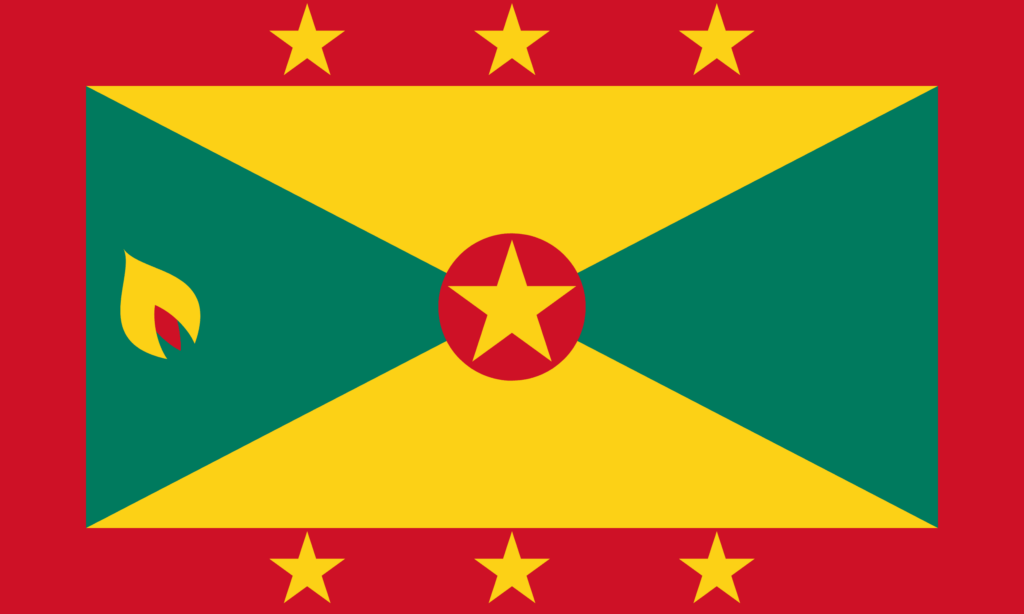
The flag of Grenada features a red border around the entire flag, with green and yellow elements inside. The use of red in the Grenada flag, much like Portugal’s, is a prominent feature. However, the symbolism and layout are distinct.
Grenada’s flag includes a nutmeg symbol, representing one of its major exports, and a diagonal division of colors, which differs from Portugal’s vertical layout.
Belarus
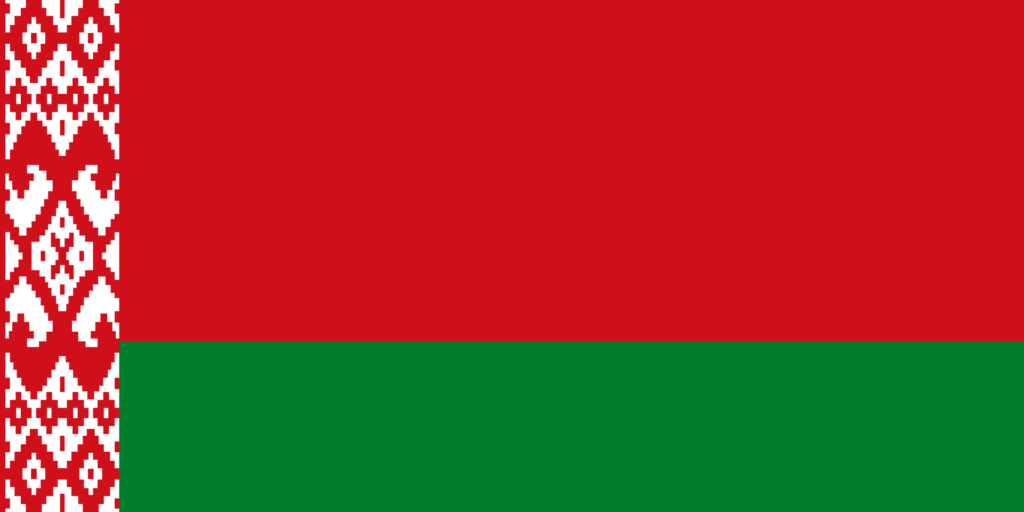
The Belarusian flag consists of two horizontal stripes: red on the top and green on the bottom, along with a traditional red and white ornamental pattern on the hoist side.
The red and green color scheme perfectly resembles Portugal’s red and green. However, the symbolism and the presence of the traditional pattern are unique to Belarusian cultural heritage.
Final Thoughts
The flag of Portugal, with its deep-rooted meanings and unique design, stands as a symbol of the nation’s distinct identity and history in the diverse tapestry of global flags. It embodies the Portuguese people’s sense of belonging and pride, encapsulating their heritage and aspirations in its colors and symbols.
Image Sources and Copyright Information
- Portuguese Flag Over Lisbon Skyline: © Benny Marty/Shutterstock
- Portugal Flag on Map: © hyotographics/Shutterstock